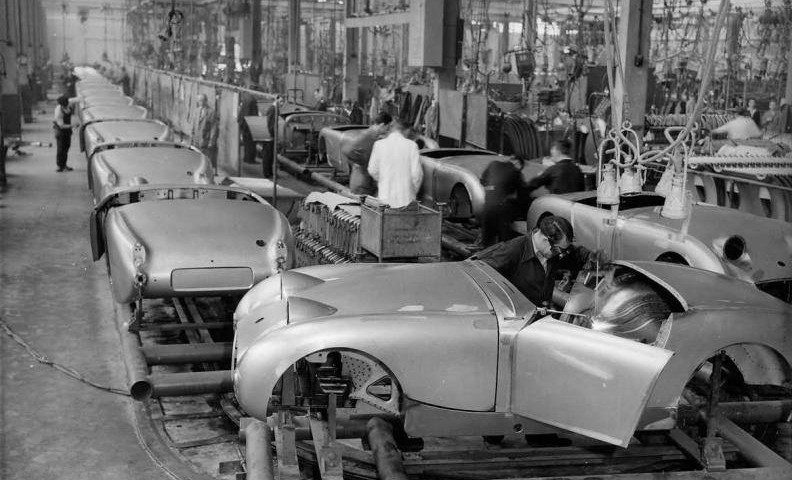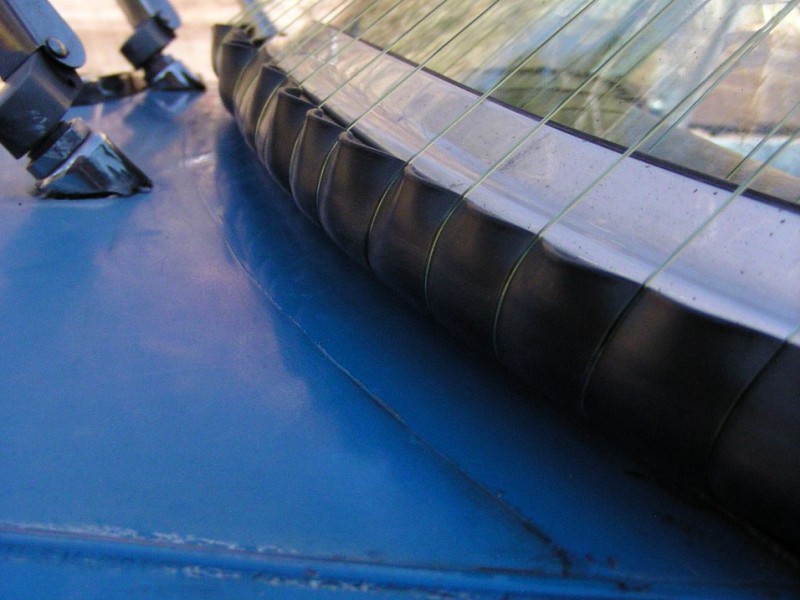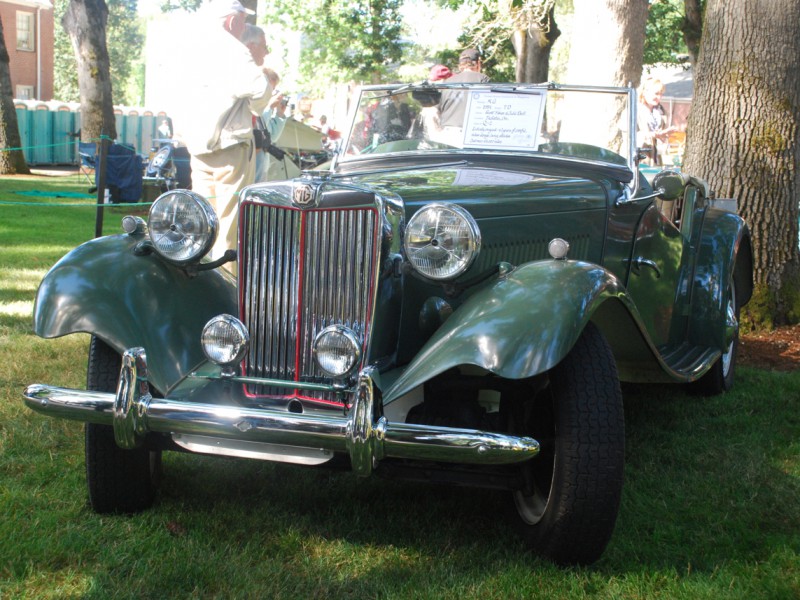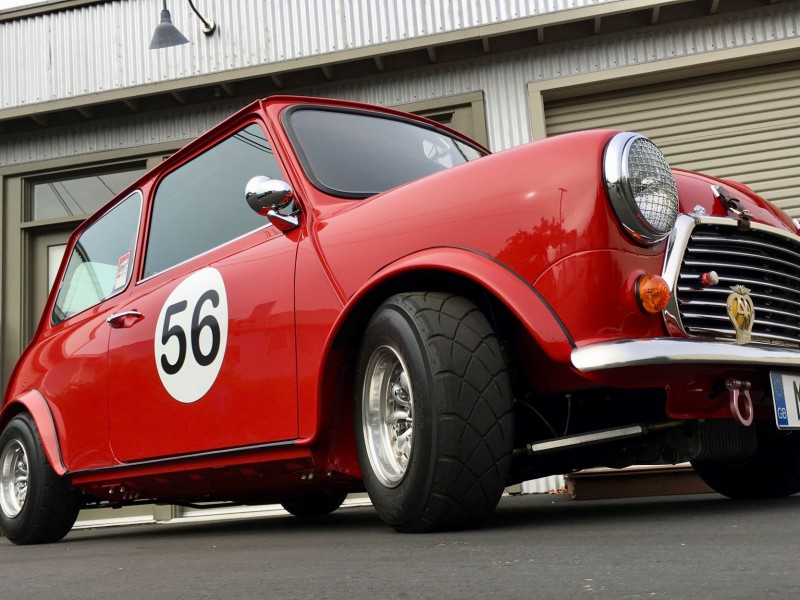By Graham Robson
Many years ago, when I was an undergraduate at Oxford, I met up and became great friends with Mike Woodcock. We were both petrol-heads, both determined to join Jaguar if we could, and became the company’s first two graduate trainees in 1957. Mike and I roomed together for several years after that, and he often unburdened himself about what he knew to be brewing at BMC’s Cowley (Oxford) and Abingdon plants, where his father was CEO.
Not that he told me everything, though on several occasions in 1957 and into 1958, he would let slip a few comments about ‘a certain small sports car’ that was being developed, but would say no more. Even so, when BMC announced that they would shortly relocate Austin-Healey 100-6 assembly from Longbridge (Birmingham) to Abingdon (Oxford), where they would be built alongside the MGA, the plan was that the small plant at Abingdon would become BMC’s sportscar assembly site—and ‘the light came on.’
Because I was living in Coventry, and because I had gotten to know almost every young sports car enthusiast in the city, even before the new car was launched I had worked out how BMC’s byzantine reasoning, and way of making cars in their often-chaotic 1950s, was going to work.
Although the new car—which we all christened ‘frog eye’ as soon as we had seen it for the first time—was to be assembled at Abingdon alongside the existing MGA, virtually none of it was to be manufactured there. Basically, much of the structure would come from the independent Pressed Steel company, the engine came from BMC Engines in Coventry, the transmission and some of the suspension came from Austin at Longbridge, while the rack-and-pinion steering gear was borrowed from the Morris Minor 1000, which was built at Cowley (Oxford).
Confusing? It’s going to get worse. As BMC’s very first unit-body sports car, every example of the Bugeye’s structure would start as a sturdy lower platform which had been pressed and welded together by John Thompson Motor Pressings of Wolverhampton, this then being trucked to Pressed Steel in Swindon for completion, later trucked even further to the BMC ‘Morris Motors’ plant at Cowley for painting and partial trimming, then—and only then—being transported to Abingdon for final assembly. That’s right, three separate road trips before the chassis/body structure of the Sprite was introduced to its running gear for the first time.
As Geoff Healey, Donald’s son and the Healey company’s chief engineer, told me some years later, actually inventing the new car and getting approval for it to be made had been much easier than feared. As he later wrote in one of his fabulously-detailed books: “The Sprite was first conceived in the winter of 1956, the result of a meeting between DMH (Donald Healey) and Leonard Lord (BMC’s dynamic chairman)… During a discussion on the sports car market both men agreed that sports cars were becoming expensive… Len Lord then commented that what was needed was a small, low-cost sportscar to fill the gap.”
It really was as simple as that. Healey had already produced the 100, Len Lord had bought in to the idea and invented the Austin-Healey brand overnight, and after that Healey was totally tied in with development of the new cars, which BMC was to make for them. Geoff Healey then shared with me that they were told that Austin had already tried (and failed) to produce a new sports car of their own, that MG would have nothing to do with the new machine, and that the small Warwick-based group would have less than two years to do the job.
Looking back, this was a very exciting time for Healey—and, indeed, for the British motor industry—for in late 1956, when work began on what Healey called ‘The Tiddler’ project, the mass-market sports car scene was wide open. The vast majority of them were being exported to the USA, where price competition was serious. At the time, there were three popular roadsters: the MGA, which sold for $2,195, the Triumph TR3 for $2,625 and the Austin-Healey 100-6 for $3195. A few specialist companies were building crude little machines (often with poorly-finished glass-fibre bodies) at knockdown prices, but apart from that there was nothing smaller, and certainly nothing cheaper than the MGA.
Healey’s directive, therefore, was very simple—yet it would be difficult to satisfy. BMC would leave them with a free hand to engineer, style and develop a new small sports car, but they insisted that there should be little new engineering involved, and that a strict price target should be met. As Len Lord would later say to Alec Issigonis when the BMC Mini was being designed: “You can use whatever engine you like, but it must already be on our production lines.” In the case of the Sprite, the same edict not only applied to the engine, but to the transmission, the suspension and the steering too.
Geoff Healey loved such a challenge (to describe him as stubborn was perhaps to understate his usual attitude to life), and set to by demanding, and getting, a mountain of drawings from his link-men at Longbridge. It was only then that the sheer mountain that he would have to climb became clear. Not only would the price targets be demanding, but so was the time schedule—BMC wanted to see the car launched early in 1958, and Len Lord was always impatient about such things. Healey would have to deal with the challenge which Abingdon’s ‘cottage industry’ layout demanded.
Quite simply, from the day that the MG car plant had been set up in 1929, the assembly method had centred around a separate chassis frame, into which the running gear was lowered from above, followed by the addition of the body shell. Because of the way that the ‘Tiddler’ (as Healey called it for a time) was to be engineered—with a unit-body layout—that could not be done. Instead, the engine and transmission would have to be placed on the line first, after which the combined chassis/body shell would be lowered into place.
Then, of course, there was problem of dealing with all the prototype testing and development which was needed, as BMC had no proving ground of their own, the industry’s corporate proving ground at MIRA (the Motor Industry Research Association), near Nuneaton, was certainly not the place to take a still-secret car where the rest of Britain’s automotive world could see it, so the tiny Healey company could originally do no more than use public highways, usually at night, and often during the weekends. Straight line testing took place on public roads near Leamington and Coventry, hill-climb work was centred on the mountainous roads of Wales, and on a few occasions Healey managed to persuade the Royal Air Force at Gaydon (where squadrons of V-bombers were based) that nuclear war was not about to break out on a Sunday, and that he could use the two-mile straight runway there.
And how many hand-built prototypes were used? Just two at first, one of which was ready to be shown to Len Lord in January 1957, the other being handed over to MG’s engineers at Abingdon so that they could make it truly compatible with the production facilities there. It was during this time that the original plan, to equip the car with fold-back headlamps in the bonnet, was abandoned to save on cost and engineering complexity. But as British law made it essential for these lamps to be at least 26 inches from the ground, this meant that they had to stick up on the bonnet instead—and it was in this way that the ‘bug eye’ style evolved.
By the end of 1957, the existence of BMC’s ‘baby sports car’ project had become an open secret across the industry. Much of the work involving high-speed endurance running, and rugged, car-destroying pave testing, had both been concentrated at the MIRA proving grounds, while the handful of hard-working prototypes were regularly seen on dashes down to Cornwall, where the rest of the Healey family were in residence.
Originally, BMC had wanted to announce the new car to the world, on 5 April 1958, but this date slipped to 20 May, when an early-production fleet of French-registered cars was shown to the press in Monte Carlo. The first examples reached North America by mid-summer, and from 1959 the trickle turned into a flood.
It was not just the Sprite’s cheeky character which did the trick for American customers, but the fact that it was such a nimble, simple, easy-to-own little machine. Oh yes, and I almost forgot to mention that BMC Chairman Len Lord’s wish to see a cheaper sports car go on sale had been achieved. The first of the bug-eye Sprites cost just $1,795, which made every rival car—even MG—start to worry.
And so they should, for the Sprite was a lasting success all over the world. And it was only British Leyland’s Lord Stokes who killed it off, by pulling out of the Austin-Healey franchise at the end of 1970.










'Bugeye Beginnings' has 1 comment
July 4, 2018 @ 8:43 pm Micky Gallagher
I must be the only one, but this type of article is so interesting. Money, profit, egos, targets, compromises and deadlines mixed into a salad and becomes the FrogEye. “Only In America”. Whoops, I got too excited!